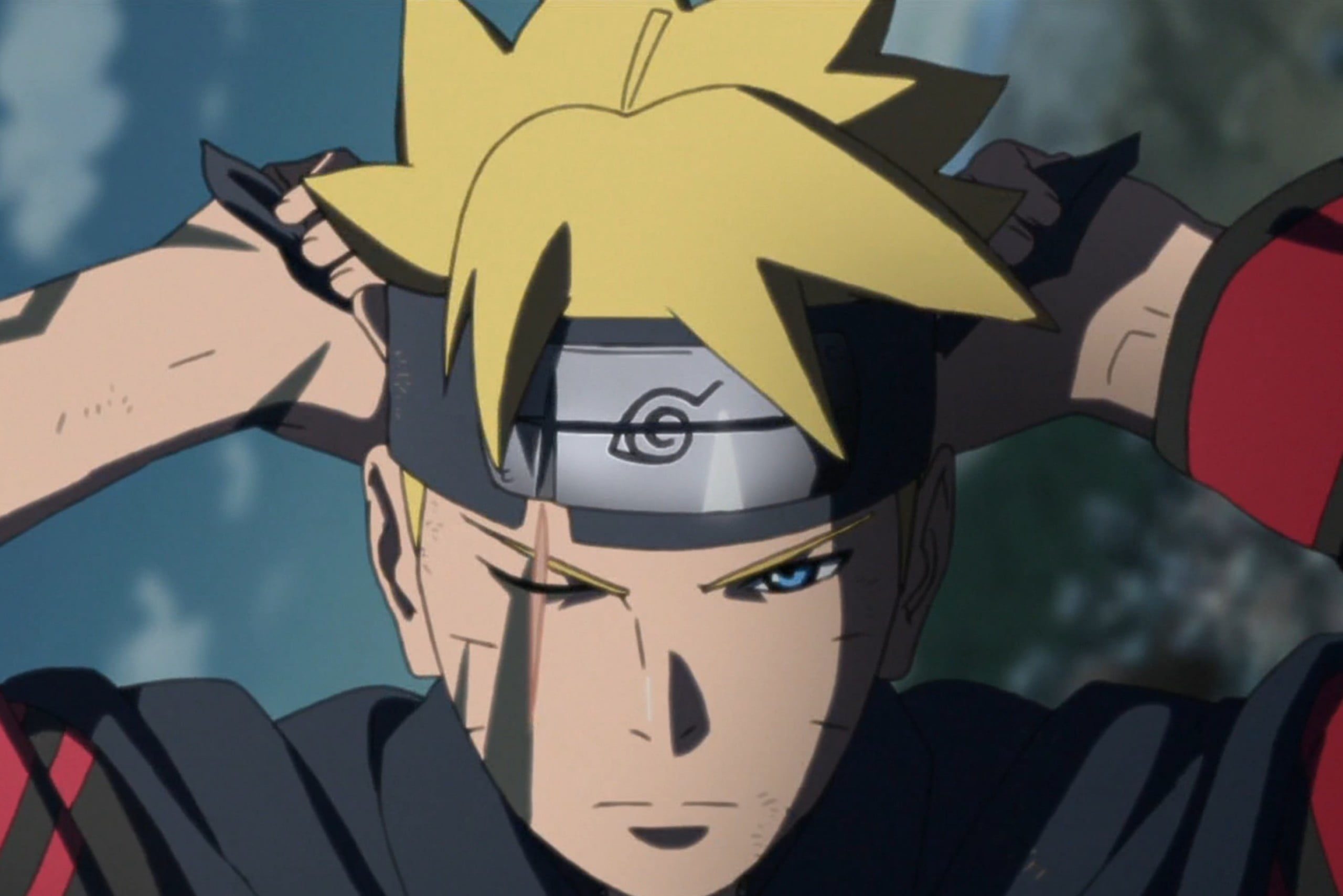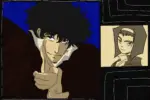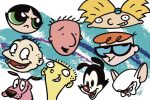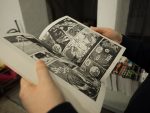It’s been three years since the story of “Naruto,” a universally beloved childhood anime, came to an end. The franchise that captured the hearts of millions across the world has since continued its journey with a sequel anime, “Boruto: Naruto Next Generations,” that follows the life of Naruto’s son and his fellow ninja. To the colossal disappointment of fans, the “Boruto” anime buckled under the pressure of upholding the Naruto legacy and continues to release vapid episodes for its sinking ship of a saga.
How could “Boruto” ever stand a chance in stepping out of the shadow of “Naruto,” a show so successful it spanned nearly 15 years? One could argue it was impossible for anything to live up to the cultural phenomenon of “Naruto”; the sequel was destined to fail.
Except that it wasn’t. “Boruto” had a remarkably promising beginning in 2015 with a movie adaptation, “Boruto: Naruto the Movie,” and a spin-off manga, “Naruto: The Seventh Hokage and the Scarlet Spring.” Each of these installments stayed true to the themes and characters of “Naruto,” enhanced by a fresh perspective on the interplay between a scientifically modernizing world and the humble, fantastical origins of ninja.
But when the creator of Naruto, Masashi Kishimoto, released his grasp on the reins of “Boruto” and conceded creative liberty to a new set of writers, he left the promise of a worthy sequel anime regrettably unfulfilled. The show, in its lackluster attempt to capitalize on the nostalgia and success of its predecessor, has tarnished the esteemed reputation of “Naruto” by warping the franchise into a frilly, feeble slice-of-life anime without a soul.
However, the “Boruto” anime is not the sole continuation of the story of “Naruto.” The manga narrative of “Boruto” is an entirely different ballgame, and carries on the storyline after the events of the movie adaptation. The manga transcends the limitations of the black-and-white, unanimated graphic novel format, and keeps the soul of “Naruto” alive in large part due to the brilliant writing of Ukyo Kodachi and supervision of Kishimoto himself.
The “Boruto” anime fails by breaching the general rule that an anime series should closely adhere to the source material of the manga. With an entirely different version of the story created by a separate set of screenwriters, the anime continues to decline in quality, highlighting its own failings relative to the resounding triumphs of the manga.
The Anime Is Too Soft
The “Boruto” anime’s greatest failing is its adoption of light-hearted themes and storylines. It is shameful that a show set in the ninja world, marked by characters with god-like powers of shinobi and multiple time-space dimensions, has episodes called “Hiashi’s Birthday” and “A Heaping Helping! The Eating Contest!” These episodes contribute nothing to an already shallow plot, focusing on meaningless, forgettable kindergarten escapades such as Boruto’s search for his grandfather’s birthday gift.
https://www.youtube.com/watch?v=ujB0VyOqVMA
While Boruto enjoys a cushy lifestyle filled with hamburgers and rescuing cats, Naruto saved the world multiple times. He overcame the hefty burdens of being an orphan, ostracism from his village, the betrayal of his best friend and the constant threat of the Nine-Tailed Beast sealed inside of him. The stark overhaul of the themes of “Naruto” immediately disqualifies “Boruto” from being considered an appropriate sequel.
Even on the rare occasions that the anime draws from a manga plot line, the anime precedes the arc with inconsequential filler storylines. This draws out the arc for much longer than necessary, eliminates suspense and diminishes any possible payoff the viewer might feel at the climax. In the case of the Mujina Bandits arc, the preceding events at Hozuki Castle detracted from the main plot with needless characters and distracting subplots. The overall slower pacing of the anime consistently weakens its value as a source of entertainment — you’d be hard pressed to find an episode whose events develop any semblance of an overarching plot.
The Anime Has Poorly Developed Characters
“Boruto” further falls flat in its one-dimensional, unlikable, insipid characters. Many, like Shikadai Nara, are simply discount versions of their parents. These characters are way too similar in everything from their appearance to their abilities. The anime further leans way too heavily on the older characters of “Naruto,” recognizing its own failure to create distinctive characters and relying on the guest appearances of an exceptional prior cast.
The characters of “Boruto” overwhelmingly lack a driving force. Without a strong motivation, these characters fail to develop over the course of the story. Boruto’s primary motivation in the anime is to gain the respect of his father, who has been somewhat absent due to the demanding responsibilities of leading the village.
But Boruto’s reasons for training and becoming a ninja are incredibly weak when compared to Naruto’s own motivations. As a child, Naruto was abandoned by his village, rejected by his peers, never knew the love of his parents and lost his best friend to forces of evil. These influences all drove Naruto to grow as a character. He learned to understand the values of friendship and perseverance, all while repeatedly proving himself to be a strong leader and ninja.
In no world does Boruto’s desire for simple recognition from his father, while Boruto has everything else handed to him in life, create stakes in his story.
Naruto was relatable and lovable because he was an underdog. He had to fight for everything he wanted from life and never gave up on his dreams despite the countless times he stumbled. In the absence of struggle, real conflicts or credible threats, the “Boruto” anime does not provide its characters with any chance for growth or meaningful development.
The Manga Successfully Builds on the “Naruto” Plot and Characters
Where the anime fails, the manga succeeds. The “Boruto” manga incorporates a unique amalgamation of science fiction and fantasy into its universe, adding a twist to the traditional world of chakra that gives the sequel a compelling hook. This builds on the world of “Naruto” without simply repeating what has already been done before.
The “Boruto” manga further provides ample room for its characters to develop. Instead of having dozens of characters introduced with each story arc, the manga limits its cast to a few key players: Boruto, Sarada, Mitsuki, Kawaki, Naruto, Sasuke and their foes. In devoting time and effort into its main characters, the manga thus allows its younger characters to grow and even surpass their predecessors as they navigate the novelty of technology mingled with the traditions of ninjutsu.
The manga further builds on “Naruto” by assigning a distinct role to the older characters. Instead of heavily leaning on the appearances of Naruto and Sasuke to lend credibility and excitement to the plot, these characters take on the roles of leaders, mentors and father figures to Boruto and the other children. They are still crucial in contributing their overpowered abilities and expertise of the ninja world; however, they provide enough space for their children to learn and grow on their own. Together, they serve as major guiding influences for Boruto.
The Manga Has Threatening Villains and Fresh Stakes
The cushy lives of the characters of the “Boruto” anime stand in stark contrast to the threatening villains of the manga. Kara, an organization likened to the Akatsuki, are powered by scientific modifications that shinobi must battle for the first time. In the background, the alien gods of the Otsutsuki clan are threatening to resurface for another shot at destroying the world as we know it.
Naruto and Sasuke are pushed to their breaking points by Jigen, an enemy with the ability to deflect their abilities. Meanwhile, Boruto and Kawaki are grappling with the implications of their “Karma” marks, which require the characters to act as vessels for Otsutsuki reincarnations. The high stakes of the “Boruto” manga make it exciting and suspenseful, keeping readers wanting more and willing to wait for the monthly installments of manga chapters.
If the producers of “Boruto” want to stop damaging the legacy of “Naruto,” they need to listen to fans and halt the production of the anime. They can only begin again when there is enough manga material to comfortably replicate, or they hire anime writers competent enough to create adequate stand-alone storylines.

















